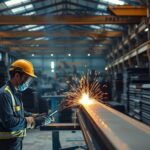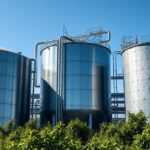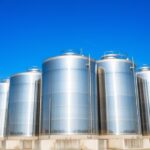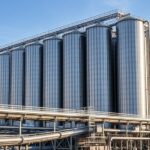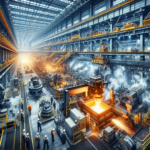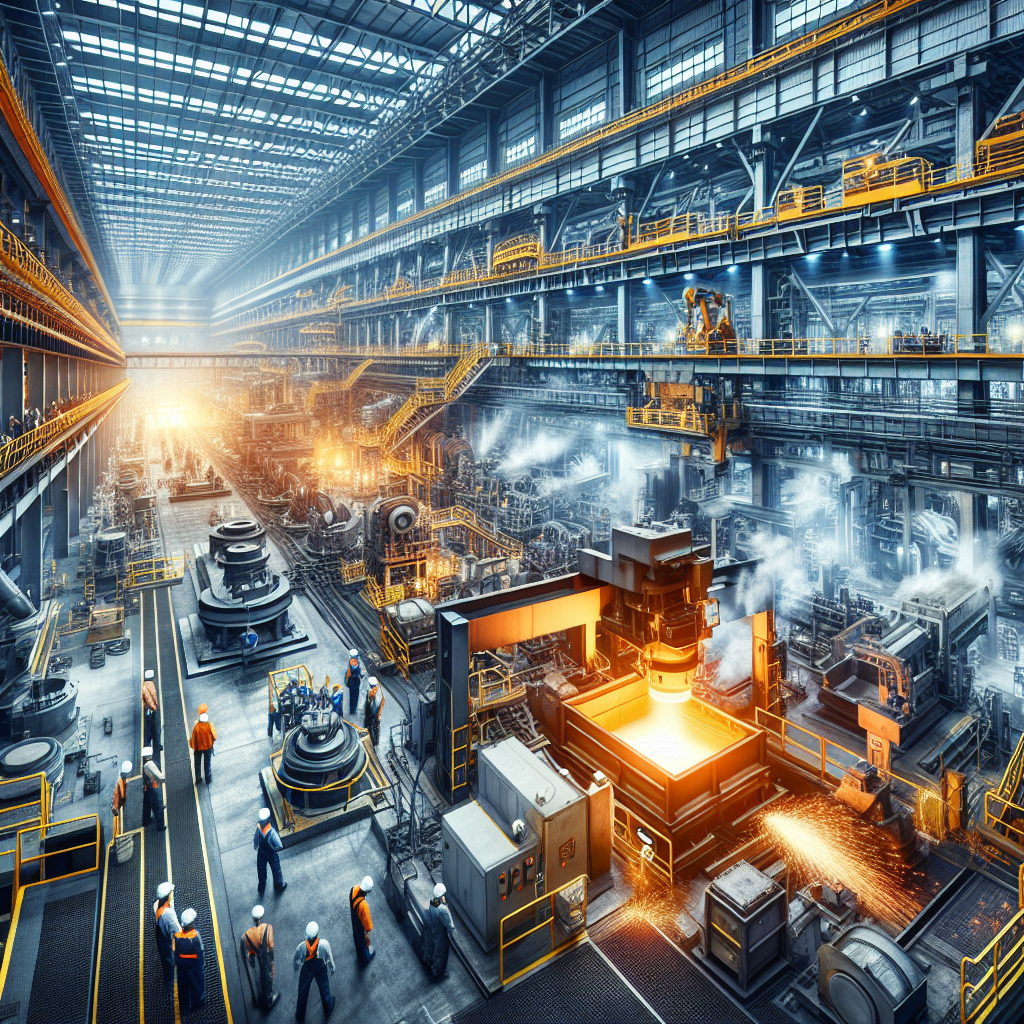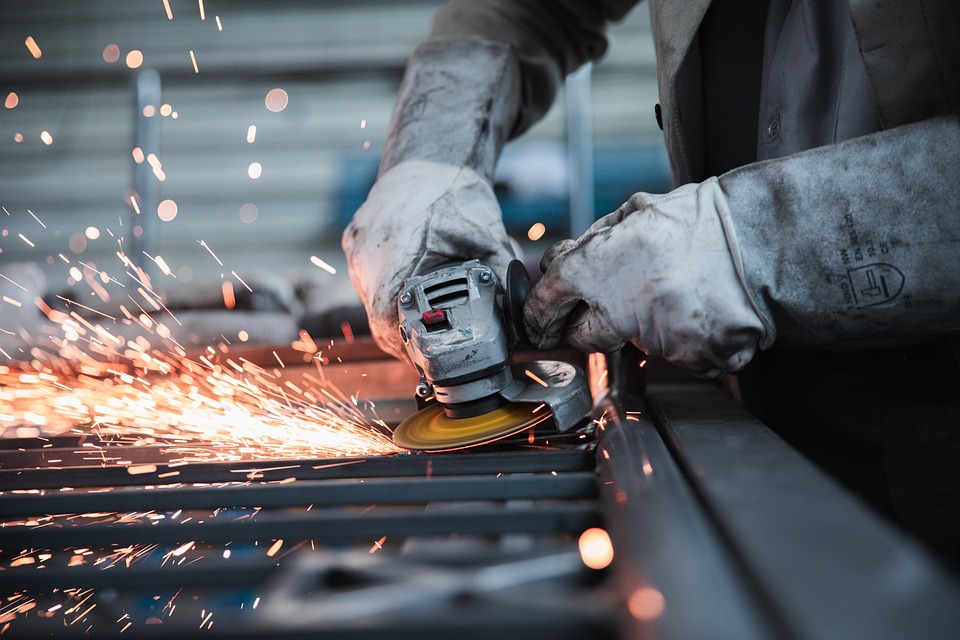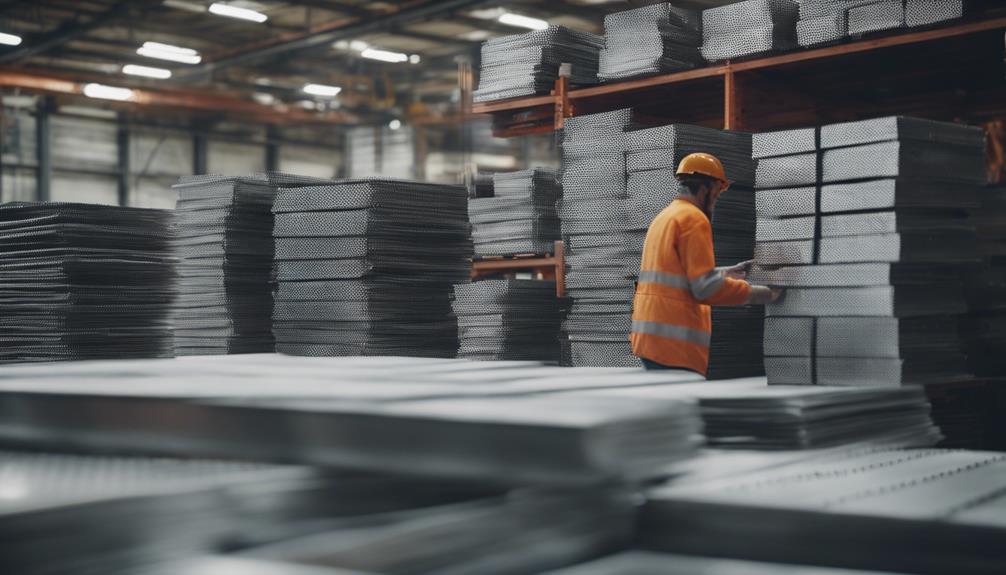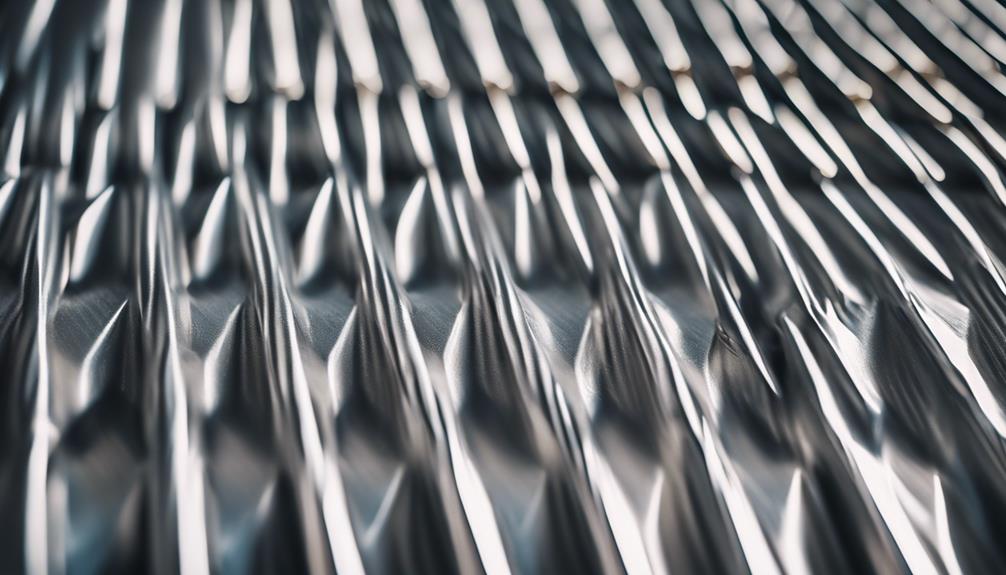Hot rolled steel coils, composed of iron, carbon, manganese, silicon, and trace elements, undergo a high-temperature rolling process to enhance strength and formability. With various grades like ASTM A1011 and A36, these coils find applications in agricultural equipment, automobile accessories, and construction due to their malleability and versatility. Their distinct appearance from the rough surface texture and oxidation layer make them ideal for applications where precise dimensions are not crucial. The extensive manufacturing process and quality control measures guarantee consistency in thickness and surface quality, making them essential in industrial applications.
Key Takeaways
- Hot rolled steel coil composition includes iron, carbon, and manganese for strength.
- High temperatures in the process enhance malleability and toughness.
- Available in different grades like ASTM A1011 and A36 for diverse applications.
- Surface treatments like pickled and oiled aid in corrosion prevention.
- Widely used in construction, automotive, and industrial applications for its formability.
Composition of Hot Rolled Steel Coil
The composition of a hot rolled steel coil typically consists of iron, carbon, manganese, silicon, and various trace elements. During the hot rolling process, steel slabs are heated to high temperatures, allowing them to be shaped into long bands. Carbon plays an important role in the properties of hot rolled steel, as it enhances the material's strength and hardness. The carbon content in hot rolled steel can vary, affecting its ductility and weldability. High temperatures facilitate the malleability of the steel, making it easier to form into different shapes and sizes. Additionally, the presence of manganese and silicon helps improve the overall strength and toughness of the hot rolled steel coil, ensuring its suitability for a wide range of industrial applications.
Advantages of Hot Rolled Steel
Characterized by enhanced formability and cost-effectiveness, hot rolled steel presents a myriad of advantages in various industrial applications. Compared to cold rolled steel, hot rolled steel offers greater formability and flexibility, making it easier to work with in shaping and bending processes. Its cost-effectiveness and suitability for applications where precise dimensions are not critical make it a popular choice in manufacturing. Hot rolled steel is ideal for projects requiring thicker gauges and structural integrity, thanks to its unique properties. Additionally, the rough surface texture and layer of oxidation give hot rolled steel a distinct appearance that is often desired in certain projects. Overall, hot rolled steel stands out for its formability and cost-effectiveness in a wide range of industrial uses.
Surface Treatments for Hot Rolled Steel
Hot rolled steel, known for its versatility and cost-effectiveness in industrial applications, can undergo various surface treatments to enhance its properties and cater to specific needs. One common treatment is the application of a protective scale jacket to prevent corrosion. Pickled and oiled treatments offer a clean surface, aiding in corrosion prevention and maintenance. Hot rolled steel can also receive enhanced surfaces for laser cutting applications. These surface treatments address different requirements such as cleanliness, corrosion resistance, and specific finishing needs. By utilizing these treatments, hot rolled steel can be customized to suit a wide range of industrial applications, ensuring durability and performance while meeting specific design criteria.
Applications of Hot Rolled Steel Coil
In various industries, hot rolled steel coils find extensive applications due to their versatility, cost-effectiveness, and durability. These coils are commonly utilized in applications where tight dimensional tolerances are not critical, such as in manufacturing railroad tracks, strappings, stampings, and components for transportation infrastructure. The malleability of hot rolled steel coils allows for easy shaping and forming into desired products, making them a preferred choice in various sectors. Different surface treatments can be applied to hot rolled steel coils to enhance their performance and longevity in specific applications. Overall, the adaptability and strength of hot rolled steel coils make them indispensable in a wide range of industrial applications.
Grades Available for Hot Rolled Steel
Several distinct grades of steel are available for hot rolled applications, each offering specific mechanical properties and strength characteristics. Hot rolled steel coil grades include ASTM A1011, A1018, A36, as well as varying strength grades like 30, 33, 36, 40, and HSLA grades such as 45C1, 45C2, and 50C1. These different grades cater to a wide range of applications, providing enhanced strength properties where needed. Understanding the unique properties of each grade is essential for selecting the right material for specific uses. Additionally, hot rolled steel grades like CSA, CSB, and CSC have diverse chemical compositions that impact their performance and suitability for different applications. Proper selection of hot rolled steel grades is vital to ensure excellent performance in various scenarios.
Characteristics of Hot Rolled Steel
Formed at high temperatures, hot rolled steel coil exhibits exceptional malleability, enabling it to be easily shaped into a variety of forms for diverse industrial applications. This characteristic makes hot rolled steel ideal for use in agricultural equipment, automobile accessories, and construction applications. The steel is available in standard specifications such as ASTM A1011, A1018, and A36, offering different grades to suit various requirements. Service providers like Alliance Steel offer additional services like slitting, shearing, and degreasing to meet specific customer needs. To enhance durability, hot rolled steel coils can undergo surface treatments like pickling and oiling, protecting them from corrosion and extending their longevity in different environments.
Manufacturing Process of Hot Rolled Steel
Utilizing high temperatures to heat steel slabs above their recrystallization point, the manufacturing process of hot rolled steel coil involves rolling the material into thin sheets for various industrial applications. This process, known as hot rolling, enables the steel to be shaped into different forms and sizes, offering versatility in manufacturing. The high temperatures used in hot rolling result in a rough surface texture on the steel coils. These hot rolled steel coils find widespread use in industries like construction, automotive, and agricultural equipment manufacturing. Their malleability allows for easy forming and shaping, making them a preferred choice for many applications requiring strength and durability.
Quality Control in Hot Rolled Steel Production
Ensuring consistent thickness and surface quality is paramount in the quality control process for hot rolled steel production. Quality control measures involve monitoring the rolling process to maintain specified dimensions and surface characteristics. Non-destructive testing techniques, such as ultrasonic testing, are utilized to detect internal defects that may compromise the integrity of the steel. Surface inspections are conducted to identify and address issues like scratches, pits, or scale that could affect the final product. Essential cooling and coiling procedures are vital to prevent problems like edge cracks or coil breaks. By adhering to stringent quality control protocols, hot rolled steel manufacturers aim to meet industry standards and customer requirements for performance, reliability, and durability.
Hot Rolled Steel Coil Sizes
Hot rolled steel coils are manufactured in a range of sizes to cater to diverse industry needs and applications. These steel products are available in various dimensions, from thin gauges to thick plates, with standard widths typically ranging from 48 inches up to 72 inches. The coil weights vary as well, ranging from light coils suitable for small applications to heavier coils designed for industrial use. Thicknesses for hot rolled steel coils typically fall within the range of 0.055 inches to 0.625 inches. Such versatility in sizes allows for the use of hot rolled steel coils in a wide array of applications across industries such as manufacturing, construction, and automotive.
Environmental Impact of Hot Rolled Steel
The manufacturing process of hot rolled steel coils not only caters to industry demands for various sizes but also carries significant environmental implications, particularly with respect to energy consumption and greenhouse gas emissions. Hot rolled steel production requires high temperatures, leading to high energy consumption and the release of pollutants, including carbon dioxide, into the atmosphere. This contributes to air quality degradation and climate change. Recycling scrap steel can reduce the environmental impact by decreasing the need for raw materials and energy-intensive processes. Ongoing efforts to improve energy efficiency and adopt cleaner technologies in hot rolled steel production aim to mitigate these environmental consequences. Sustainable practices, such as utilizing renewable energy sources and optimizing resource utilization, can help minimize the environmental footprint of hot rolled steel.
Frequently Asked Questions
What Is Hot Rolled Coil Steel?
Hot rolled coil steel is a versatile material produced by rolling steel slabs at high temperatures. It offers malleability for shaping into various forms and sizes, finding applications in agriculture, automotive, and construction industries.
What Is the Difference Between Hot Rolled Coil Steel and Stainless Steel?
Stainless steel, renowned for its corrosion resistance from chromium content, differs from hot rolled coil steel in durability and anti-rust properties. While hot rolled coil steel is cost-effective and versatile, stainless steel offers superior resistance for specialized applications requiring hygiene and longevity.
Is Hot Rolled Steel Stronger Than Cold Rolled?
Strength in steel is primarily determined by its material composition, not the rolling process. Cold rolled steel is typically harder and stronger due to additional processing steps, while hot rolled steel is more ductile and malleable.
What Are the Disadvantages of Hot Rolled Steel?
Hot rolled steel has drawbacks including rough surfaces, reduced strength compared to cold rolled steel, less precise dimensions, and unsuitability for applications requiring tight tolerances or smooth finishes. Additional processing may be needed for desired surface characteristics.
